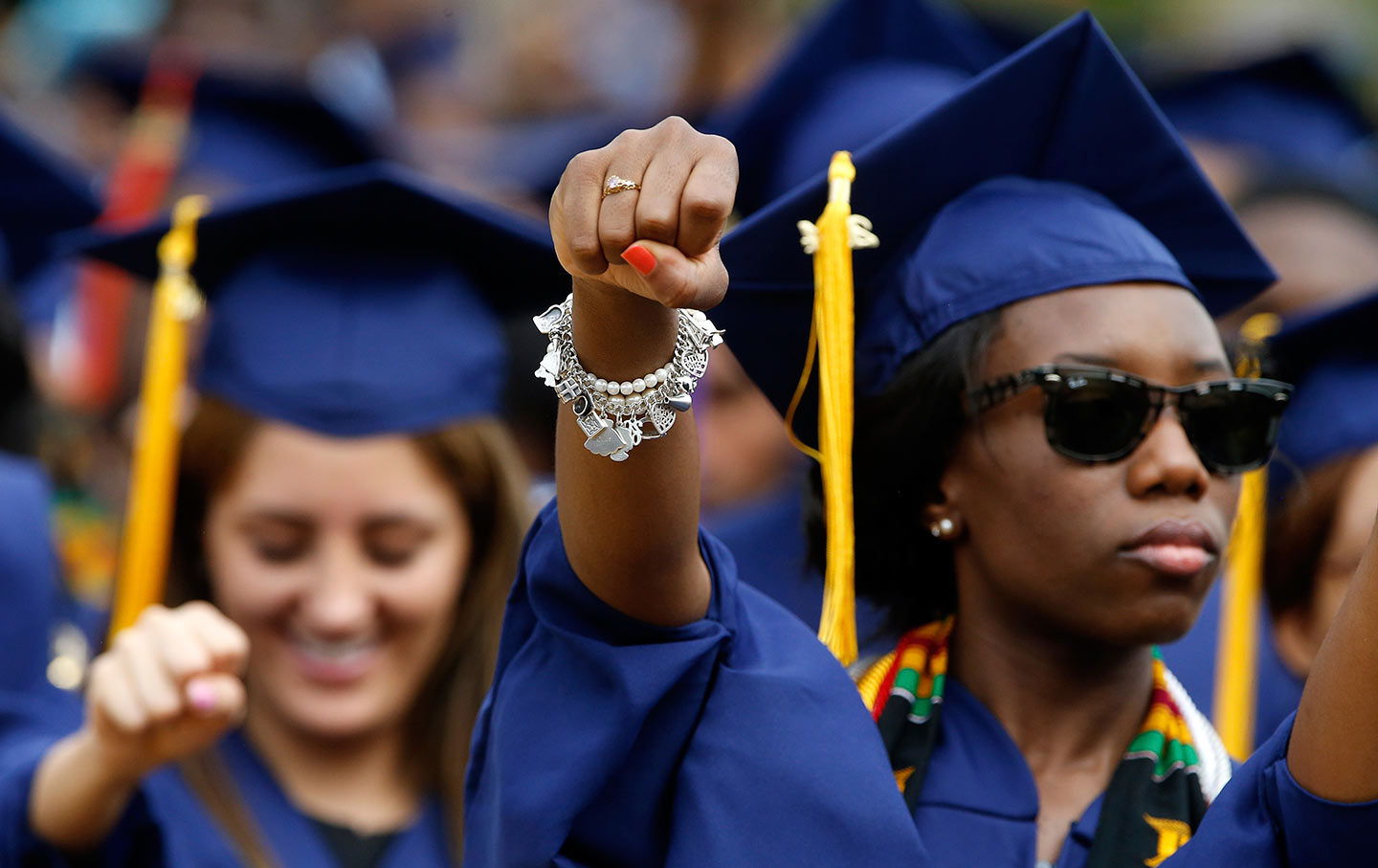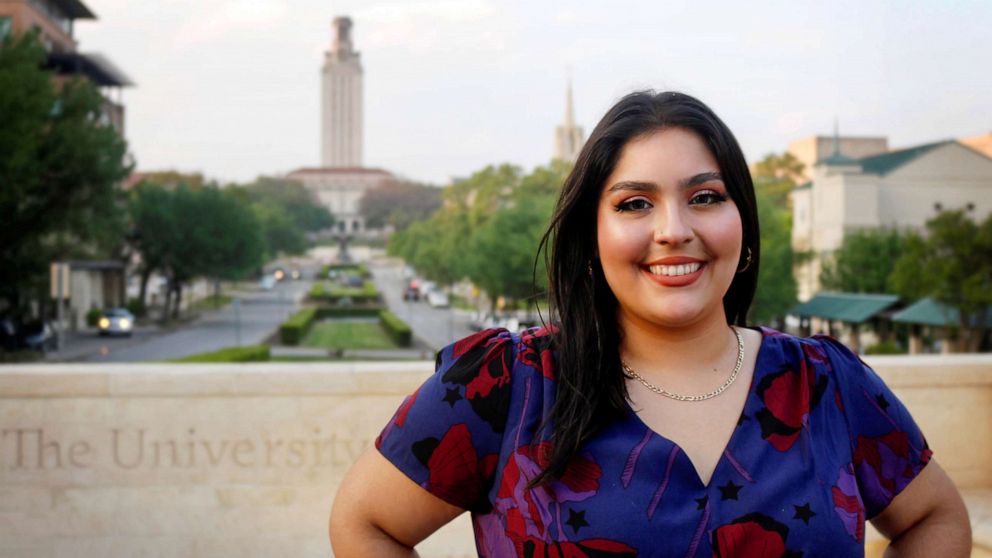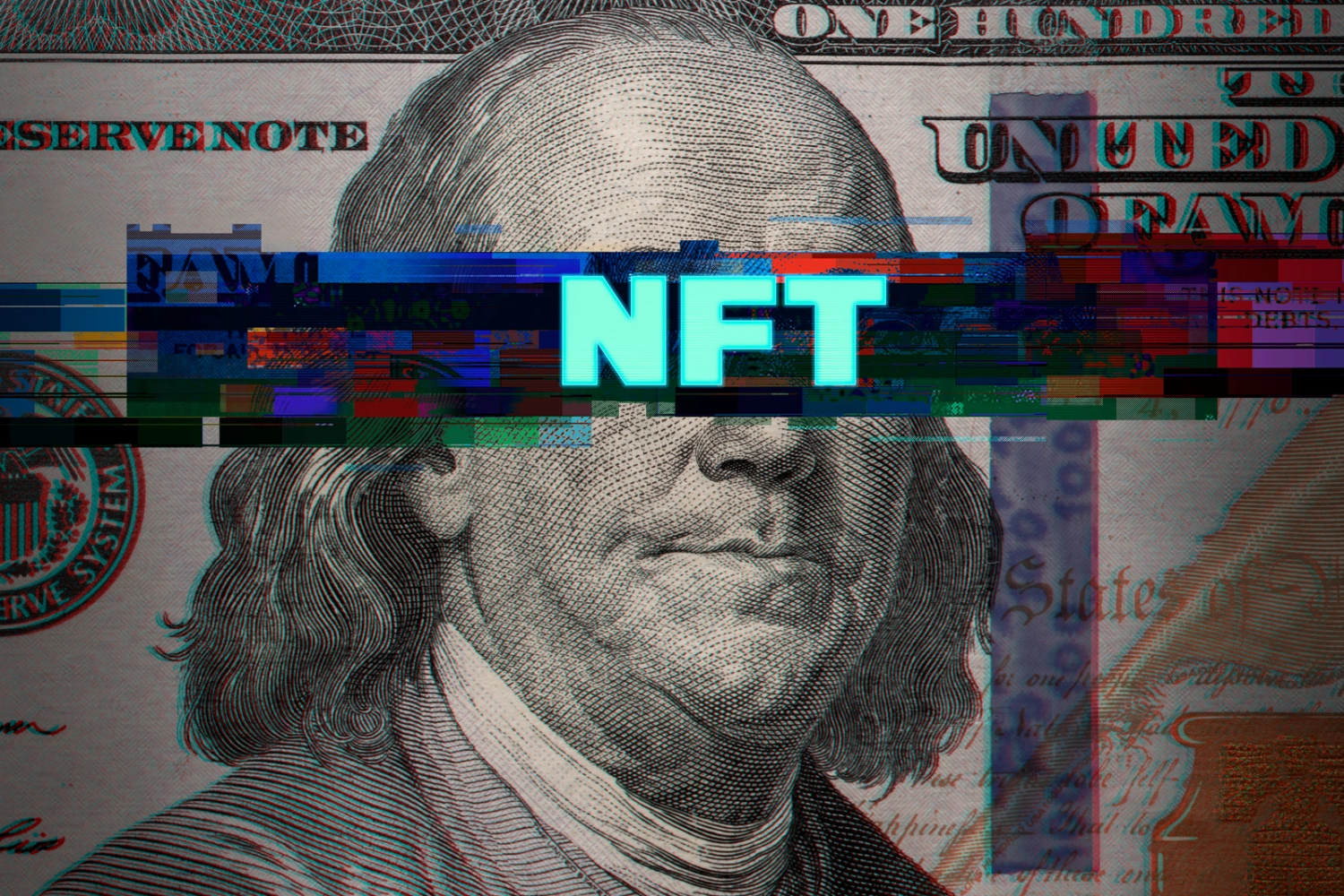Black Millennials Student Loan Debt: Breaking Free

Black millennials face significant student loan debt, impacting their financial security. Economic disparities compound the challenges this demographic endures.
Navigating the financial landscape, black millennials in the United States struggle more with student loan debt than their peers, often due to socioeconomic factors that influence their education funding. The burden of this debt extends beyond just their wallets, affecting their ability to build wealth, purchase homes, and invest in their futures.
With the pursuit of higher education being a double-edged sword, these young adults find themselves trying to balance the quest for better opportunities against the yoke of financial obligation. In this light, understanding the causes, effects, and potential remedies for black millennials’ student loan debt can empower stakeholders to create more equitable lending practices and support systems.

Credit: www.goodmorningamerica.com
The Burden Of Student Loan Debt On Black Millennials
For many Black millennials, the dream of higher education often comes with a hefty price tag: student loan debt. This financial burden affects their ability to build wealth, start businesses, or buy homes. Let’s dive into the nuances of this pressing issue.
Disproportionate Impact On Black Graduates
Black millennials face significantly higher levels of student loan debt than their white peers. This imbalance stems not just from tuition costs but also from the necessity of covering living expenses during their studies. The financial strain continues post-graduation, often resulting in a cycle of debt that hampers future financial prospects.
- Higher Borrowing Rates: Statistics reveal that a greater percentage of Black students take out loans.
- Substantial Debt Levels: The amounts borrowed are often higher, leading to greater debt burdens after graduation.
- Long-Term Effects: This cycle can affect credit scores, home ownership rates, and overall financial stability.
The Role Of Historical Inequities In Higher Education
Exploring the roots of this disparity, historical inequalities play a crucial part. Predominantly Black colleges and institutions often receive less funding, which translates into fewer scholarships and more loans for students. The broader socio-economic gap means that Black families have less generational wealth to support their education.
| Factor | Effect on Black Millennials |
|---|---|
| Less Access to Wealth | More reliance on student loans |
| Funding Gaps | Fewer institutional scholarships available |
| Support System | Lack of financial literacy resources |
In conclusion, the intersection of higher education costs and existing socioeconomic disparities creates a challenging environment for Black millennials striving for academic and financial success.

Credit: www.reddit.com
Personal Stories: Struggles And Triumphs
Millennial voices echo the hard truths of student loan debt. Yet, inside these stories, we find not just struggle, but also celebration. Each narrative reveals the heavy burden of financial debt but also shares a glimpse of light where individuals overcome massive obstacles. These real-life tales put a human face on the numbers and statistics we so often hear.
Voices From The Debt Cycle
- Alex’s story: Juggling multiple jobs to keep afloat.
- Jasmine’s journal: Sacrificing her dream job for one that pays the bills.
- Eli’s experience: Delaying homeownership and family plans.
These are the untold journeys of many Black Millennials. Their stories provide insight into the emotional and financial pressures of carrying a student loan’s weight. Through their perseverance, they reveal the grit and resilience required to navigate such an overwhelming challenge.
Success Against The Odds: Case Studies
| Name | Debt Amount | Strategies | Outcome |
|---|---|---|---|
| Marcus | $85,000 | Budgeting, freelancing, debt snowball method | Debt-free in 7 years |
| Nia | $40,000 | Public Service Loan Forgiveness, side hustles | Reduced debt, expecting forgiveness |
| Tyler | $65,000 | Living frugally, extra payments | Debt halved in 4 years |
Marcus, Nia, and Tyler showcase the power of determination and clever strategies in facing down their debts. From finding additional sources of income to utilizing debt relief programs, these stories illustrate the many ways Black Millennials are fighting the battle against student loan debt.
Statistical Landscape Of Black Borrowers
The conversation on student loans often overlooks the unique struggles faced by specific demographics. Among them, Black Millennials find themselves at a vexing intersection of higher education aspirations and financial burdens.
Debt Figures And Repayment Challenges
Black Millennials shoulder a disproportionate amount of student loan debt. Studies illuminate this stark reality with numbers that cannot be ignored.
- Black college graduates owe an average of $25,000 more in student loan debt than their white counterparts upon leaving school.
- Within four years of completing a bachelor’s degree, nearly half of Black borrowers owe 12.5% more than they initially borrowed.
- Payment plans extend longer due to economic disparities, leading to a cycle of debt that persists years beyond the graduation cap toss.
Comparative research points to systemic issues that contribute to these repayment challenges—lower family wealth, wage gaps, and less financial cushioning. This landscape creates formidable barriers to wealth-building for Black Millennials.
Comparing With Other Demographics
Contrasting these figures with other groups reveals the uneven terrain that Black borrowers navigate.
| Demographic | Average Debt at Graduation | Debt Increase Post-Graduation |
|---|---|---|
| Black Millennials | $25,000 more | +12.5% after 4 years |
| White Graduates | — | Less likely to see debt increase |
| Latinx Graduates | Varies | +10% after 4 years |
This comparative overview not only underscores the heightened debt levels but also emphasizes structural disparities. While all demographics face student loan burdens, Black Millennials encounter unparalleled systemic obstacles in debt accumulation and its repayment.

Credit: www.reddit.com
Strategies For Managing And Overcoming Debt
Black Millennials face unique financial challenges, especially relating to student loan debt. With this in mind, it’s important to focus on strategies that can aid in managing and ultimately overcoming this financial burden. Implementing effective financial planning, and exploring available debt relief and forgiveness programs, can lead to a path of financial freedom.
Financial Planning And Budgeting
Creating a solid financial plan is the first step toward conquering student loan debt. A detailed budget can track spending and optimize savings.
| Stage | Action | Goal |
|---|---|---|
| Assessment | Review current debts and income | Understand financial standing |
| Budgeting | Allocate funds for essentials and loan repayment | Reduce unnecessary expenses |
| Planning | Set short and long-term goals | Stay focused on debt reduction |
Debt Relief And Forgiveness Programs
Debt relief programs offer an opportunity to reduce the burden of student loans.
- Income-Driven Repayment Plans: Lower monthly payments based on income.
- Public Service Loan Forgiveness: Eliminates remaining debt after qualifying public service work.
- Teacher Loan Forgiveness: Offers reprieve for educators in low-income schools.
Exploring these options can lead to significant reductions in student loan debt.
Advocacy And Policy Change
Black Millennials are shouldering the burden of student loan debt, a challenge that’s more than just financial. It’s a systemic issue rooted in decades of unequal access to education and wealth-building opportunities. Recognizing this, advocates and policymakers are stepping up to create change. They seek to dismantle barriers and ensure fair lending, aiming for long-lasting equity in education financing.
Campaigns For Fair Lending Practices
High-impact campaigns are essential for spotlighting unfair lending practices. These practices often affect Black Millennials adversely. Activists work tirelessly, using research and real stories to push for transparency and fairness from lending institutions.
- Educational programs help borrowers understand their rights.
- Public forums bring the issue to light, gathering community support.
- Legal challenges target discriminatory lending, aiming to change the system from within.
Legislative Efforts To Level The Playing Field
Lawmakers are acknowledging the disparities faced by Black Millennial borrowers. They propose legislation aimed at equalizing the educational playing field.
| Legislative Action | Purpose | Impact |
|---|---|---|
| Loan Forgiveness Programs | To reduce the debt burden | Direct relief for qualified borrowers |
| Interest Rate Caps | To control the cost of borrowing | Makes repayment more manageable |
| Investment in Education | To improve access and affordability | Long-term economic growth and equality |
Success in these areas means a crucial shift towards inclusivity in education finance. The fight continues as advocates and lawmakers strive for a future where debt does not dictate destiny.
Future Prospects: Education And Financial Independence
Black Millennials face a financial landscape marked by student loan debt, affecting their pursuit of education and financial freedom. This segment explores practical steps to navigate these challenges, aiming for a prosperous future.
The Role Of Economic Education
Knowing how money works is key to financial success. Economic education empowers individuals with tools to manage debt and grow income. It includes understanding personal finance basics, investment strategies, and the importance of building credit wisely.
- Effective budgeting
- Debt management practices
- Investment principles
Building Wealth Beyond Debt
Escaping the debt cycle requires a solid plan and consistent action. Steps toward building wealth include:
| Step | Action |
|---|---|
| 1 | Pay more than the minimum on student loans |
| 2 | Explore side hustles for extra income |
| 3 | Invest in retirement accounts early |
| 4 | Seek financial advisors for guidance |
Frequently Asked Questions Of Black Millennials Student Loan Debt
How Do Black Millennials Manage Student Debt?
Many black millennials tackle student loan debt through a mix of budgeting, income-driven repayment plans, and side hustles for extra income. Financial literacy programs and seeking scholarships also play a key role in managing and repaying their loans effectively.
What Is The Average Student Loan Debt For Black Millennials?
The average student loan debt for black millennials tends to be higher compared to other demographics, with figures often exceeding $30,000. This is attributed to disparities in wealth and access to financial aid, among other socioeconomic factors.
Are There Loan Forgiveness Options For Black Millennials?
Yes, black millennials may qualify for several loan forgiveness programs, including Public Service Loan Forgiveness, Teacher Loan Forgiveness, and income-based repayment plan forgiveness. Eligibility for these programs often depends on one’s profession and consistent repayment history.
How Does Student Debt Affect Black Millennials’ Wealth?
Student debt significantly impacts the wealth accumulation of black millennials by limiting their ability to save, invest, and purchase homes. The debt-to-income ratio they face often means delaying major life and financial milestones compared to peers with less or no student debt.
Conclusion
Navigating student loan debt is a formidable challenge for black millennials. By focusing on comprehensive repayment strategies and seeking out grants and scholarships, this demographic can alleviate financial burdens. Embracing financial literacy and advocating for policy change are crucial steps towards a debt-free future.
As we press on, the collective effort will be key to turning the tide against the student loan crisis.







